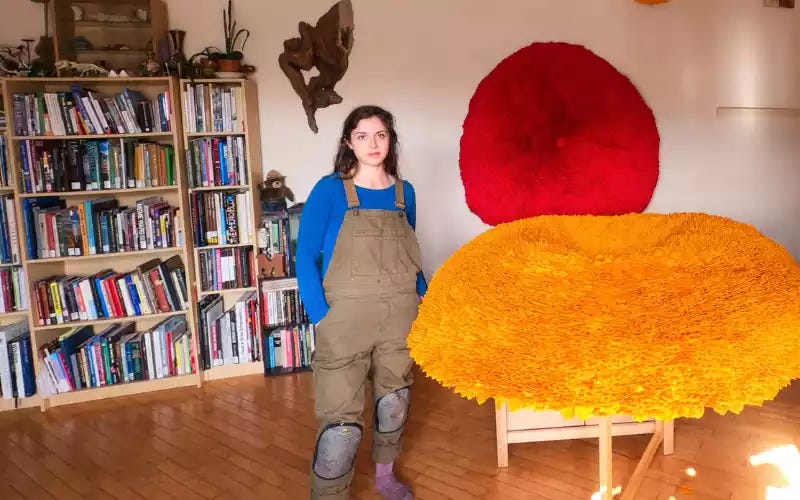Charting New Art Graduates' Paths into Arts Management From Studio to Strategy
The energy, fresh perspectives, and deep artistic interest that new art graduates bring are vital lifelines for the cultural sector. Yet, the path from art school to art management can be uncertain.
Charting New Art Graduates' Paths into Arts Management From Studio to Strategy
The energy, fresh perspectives, and deep artistic interest that new art graduates bring are vital lifelines for the cultural sector. Yet, the traditional path from art school into sustainable, impactful careers is often fraught with uncertainty. Simultaneously, arts organizations face evolving challenges – digital transformation, diversified funding models, audience engagement in a crowded landscape, and the constant need for innovation.
This convergence presents a powerful, often overlooked opportunity: strategically guiding talented new graduates towards essential arts management roles. This article explores why this shift is crucial now, the skills needed, and actionable pathways for both graduates and the industry to make it happen.
Why Arts Management Needs New Grads (And Vice Versa)
Fresh Eyes on Persistent Challenges: New graduates aren't burdened by "the way things have always been done." They bring contemporary perspectives on digital culture, social engagement, and interdisciplinary approaches crucial for reaching new audiences and solving old problems creatively.
Deep Artistic Literacy: They possess an intrinsic understanding of artistic process, terminology, and community nuances – a foundational asset often harder to teach than business skills. This fosters authentic communication with artists and audiences.
Digital Natives: Comfort with technology, social media, and emerging digital platforms is second nature, providing essential skills for marketing, outreach, and operational efficiency.
Passion Meets Pragmatism: They enter the field with high motivation and a desire to make a difference. Channeling this passion into management roles builds a stronger, more resilient arts infrastructure.
Career Sustainability: For graduates, arts management offers viable, impactful career paths beyond the studio or precarious freelance gigs, allowing them to stay deeply connected to the arts ecosystem they love.
Sponsored by Art8 “Webinars for Creatives”
Bridging the Gap: The Essential Skills New Grads Need to Cultivate
While artistic passion is a given, transitioning into management requires developing a complementary toolkit. Academic programs are increasingly incorporating these, but proactive graduates must seek them out:
Business Acumen & Financial Literacy:
Understanding Budgets & Funding: Grasping income streams (grants, earned revenue, donations), expense tracking, and basic financial reporting. How do you translate artistic vision into a viable budget?
Fundraising Fundamentals: Principles of grant writing, individual giving, sponsorship, and crowdfunding. Understanding donor cultivation cycles.
Project Management: Planning, scheduling, resource allocation, risk management, and evaluation. Essential for exhibitions, events, and programs.
Strategic Thinking & Audience Development:
Mission Alignment: Connecting daily tasks to the organization's core purpose and long-term goals.
Market Research & Analysis: Understanding target audiences, demographics, and community needs. Analyzing data to inform decisions.
Marketing & Communications: Crafting compelling narratives for different platforms (digital, print), understanding branding, PR basics, and audience segmentation.
Operations & Legal Savvy:
Basic Legal Knowledge: Contracts (artist, venue, vendor), copyright, insurance, liability, and labor laws (especially for interns/volunteers).
Venue & Facilities Management: Logistical planning for exhibitions, performances, or events (tech, safety, staffing).
Technology Proficiency: CRM/database use, project management tools (Asana, Trello), website CMS, digital analytics, and potentially basic design software beyond artistic suites.
"Soft" Skills are Hard Requirements:
Communication & Diplomacy: Clear writing, confident speaking, active listening, navigating diverse stakeholder relationships (artists, board, staff, public).
Collaboration & Teamwork: Thriving in interdisciplinary environments, giving and receiving constructive feedback.
Problem-Solving & Adaptability: Thinking critically under pressure, finding creative solutions with limited resources, embracing change.
Leadership & Initiative: Taking ownership, motivating others (volunteers, peers), and demonstrating proactive thinking.
Pathways for New Graduates: From Aspiration to Action
Moving into management requires intentionality. Here’s how graduates can proactively build their trajectory:
Seek Relevant Experience Early & Often:
Targeted Internships: Go beyond gallery assistant roles. Seek internships in development, marketing, programming, education, or operations departments. Be clear about wanting management exposure.
Project-Based Roles: Volunteer or seek contract work managing specific events, community projects, or small exhibitions. Document your role and impact.
Arts Administration Temp Work: Temp agencies specializing in non-profits/arts can provide diverse entry-level office experience within the sector.
Leverage Your Network Strategically:
Informational Interviews: Connect with arts managers (not just directors!). Ask about their career paths, daily tasks, challenges, and essential skills. Build genuine relationships.
Professional Associations: Join groups like Americans for the Arts, National Arts Marketing Project, or local/regional arts service organizations. Attend their conferences and events (often student discounts available).
Mentorship: Actively seek mentors – professors with industry links, managers met during internships, alumni. Be specific about the guidance you need.
Invest in Professional Development:
Targeted Workshops & Courses: Look for non-degree offerings in grant writing, nonprofit finance, marketing, project management, or arts leadership. (e.g., Foundation Center workshops, local community colleges, online platforms like Coursera/edX).
Certificates: Consider short certificate programs in nonprofit management, arts administration, or specific skill areas like digital marketing.
Conferences: Attend sessions focused on management, operations, and leadership, not just artistic content. Network actively.
Reframe Your Artistic Experience:
Highlight Transferable Skills: Did organizing a student show involve budgeting, scheduling, promotion, or team coordination? Frame studio practice as demonstrating project management, critical thinking, and self-direction. Articulate this clearly on your resume and in interviews.
How the Industry Can Cultivate the Next Generation of Managers
Supporting this transition isn't just the graduate's responsibility; the sector must actively foster talent:
Create Meaningful Entry Points:
Structured Internships: Offer paid internships with clear learning objectives, mentorship, and exposure to various management functions. Move beyond "fetching coffee."
Fellowship Programs: Develop post-graduate fellowships specifically designed to rotate fellows through key management departments (e.g., 6 months in marketing, 6 in development).
"Assistant" Roles with Growth: Design entry-level positions (e.g., Marketing Assistant, Development Associate, Programming Assistant) with defined pathways for skill development and advancement.
Embrace Mentorship & Internal Training:
Formal Mentorship Programs: Pair new hires or interns with experienced managers.
Cross-Training: Allow staff to spend time in different departments to understand the whole organization.
Professional Development Support: Offer stipends or time off for staff to attend workshops, conferences, or courses relevant to their management growth.
Re-think Job Requirements:
Skills Over Years: For entry-level management roles, prioritize demonstrable skills (project management, communication, initiative) and cultural fit over extensive prior management experience. Value relevant arts background highly.
Clear Progression Ladders: Define what it takes to move from an "Assistant" to a "Coordinator" or "Manager" role within the organization.
Partner with Academia:
Advisory Boards & Curriculum Input: Engage with local art schools to advise on incorporating essential management skills into fine arts and design curricula.
Guest Lectures & Workshops: Send managers to speak to students about career paths and practical skills.
Project Collaborations: Partner with university departments on real-world projects where students gain management experience under guidance.
Building a Stronger Arts Management Career Future, Together
The future vitality of the arts sector depends on cultivating skilled, passionate leaders who understand both the artistic soul and the managerial backbone of organizations. By recognizing the immense potential new art graduates hold for arts management and by creating intentional pathways for their development – through proactive graduate efforts and structural support from educational institutions and arts organizations – we unlock a powerful synergy. It’s not about diverting artists from making art; it’s about empowering them to build and sustain the essential structures that allow art to thrive and reach audiences. Let’s move beyond the studio vs. office divide and build a more dynamic, resilient, and innovative arts ecosystem, one strategically placed new graduate manager at a time.
Art Institute Spotlight: Molly Gambardella
Why This Artist Assembles Hundreds of Small Objects to Say One Big Thing

Art as a Shared Commons, Not a Solo Act
Molly Gambardella views her art practice as a contribution to something bigger: what she calls “our cultural commons.” And it’s rooted in the way her early experiences reshaped how she thought about making anything at all.
At 18, the young artist found herself without stable housing, caught in the middle of Occupy movements across the country. That moment in her life, though difficult, offered something profound. “I learned the importance of collective thinking over individual ego,” she shares. Being part of something larger shifted her understanding of what art could do.
Her work today often focuses on the overlooked, mundane things most people skip over. In her hands, they become part of a larger conversation as she explores the poetic undercurrents that run through everyday life.
“My aim is for people to encounter my work and engage in a collective yet personal reflection, fostering a deeper understanding of our world.” For her, art is a space to meet—where people can rethink their place in the world, even if just for a moment.
Discover the World’s Top Art Institutes at https://artinstitutes.org





